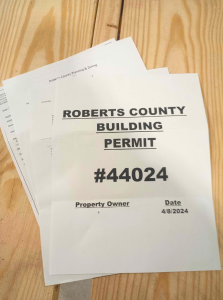Unless one has grown up on a foreign planet, they are probably familiar with Hertz® Rent-A-Car. My lovely bride and I rent lots of cars (usually for about 50% of the year), so we are intimately familiar with Hertz. Hertz is not only #1, they also are nearly everywhere on the face of the Earth.
One would think, regardless of the Hertz location, they would have this entire car renting thing down to an exact science. Maybe in most parts of the United States but not in locales such as Quito, Ecuador.
Hertz is the main international car rental agency in Quito (Ecuador’s capital with a population of nearly three million and over 9,000 feet above sea level). One can book online with Hertz and even prepay, however it is going to be expensive as well as more complicated than buying a house.
Among the ridiculous list of documents which will needed to be provided to rent from Hertz in Quito are (but not limited to): Passport, Valid Driving License, International driving permit, an exact replica of your credit card modelled out of indigenous mud and a photograph of your maternal grandmother eating an arepa. (Ok, I’m stretching it a bit).
Obviously most of us do not carry with us more than two or three of the above items, so we are rejected for renting a car from Hertz.
There are times when surviving the Planning and Building permit process for a new pole building can feel the same way – like we never have all of the right documentation.
Well, more and more county and city governments are trying to speed up the permitting process. Some have instituted online systems for applying, paying and checking on the status of your rental..
I’m hopeful these new technologies and processes will soon make their way to the entire country. Meanwhile, back at the ranch, there are ways to speed up the building permit process.
In the event you are considering building anything, and have not been in contact with your Planning Department, please do this now (it seriously will make your life so much easier):
https://www.hansenpolebuildings.com/blog/2013/01/planning-department-3/
Once through the gauntlet of Planning (Kind of like waiting in line at the Hertz counter), it’s on to the Building Department to verify Code and Load information:
https://www.hansenpolebuildings.com/blog/2013/11/design-criteria-3/
With the above accomplished, it is time for serious business.
 Most jurisdictions will provide a checklist of items with which you must comply. Take the list and check it twice, because they will think you are naughty and not nice if the complete package of required information is not provided at time of submittal.
Most jurisdictions will provide a checklist of items with which you must comply. Take the list and check it twice, because they will think you are naughty and not nice if the complete package of required information is not provided at time of submittal.
Meet with the staff to discuss your project at the earliest possible point.
Take advantage of any pre-submittal process (or pre-planning conference). In this meeting input is provided by all staff involved in the review process. Much better to find out about having to pour sidewalks, install a fire hydrant, or any other possible surprises early in the game.
Any chance of complex environmental issues? Schedule a meeting with the jurisdiction’s land use biologist or similar official.
Take advantage of any simultaneous review processes where site plan, environmental permit and building permit reviews take place concurrently.
Respond to staff building permit review comments in a timely manner. Always request comments to be specific and made in writing – and pass along the written list to your pole building provider, so they can share it with their engineers.
With some patience, the building permit acquisition process can be far easier than Hertz in Quito!







